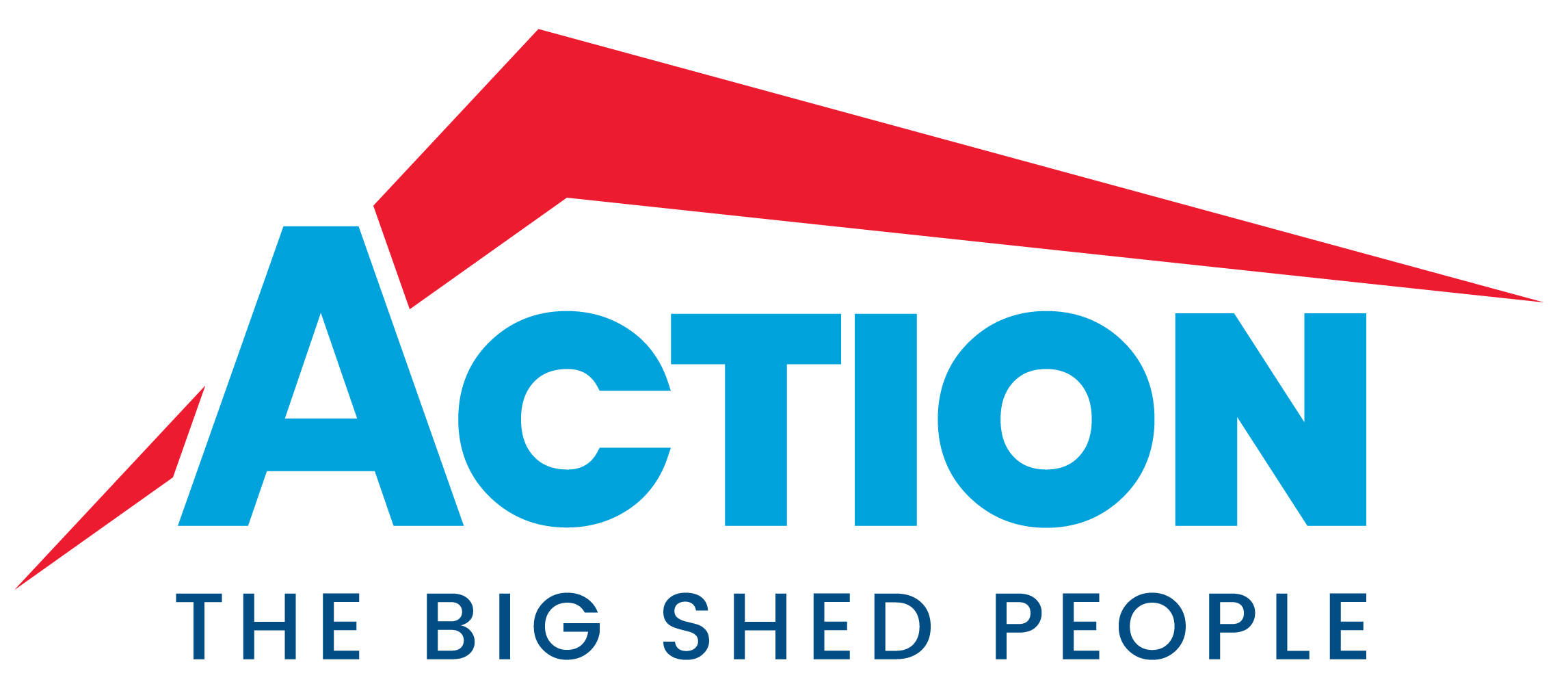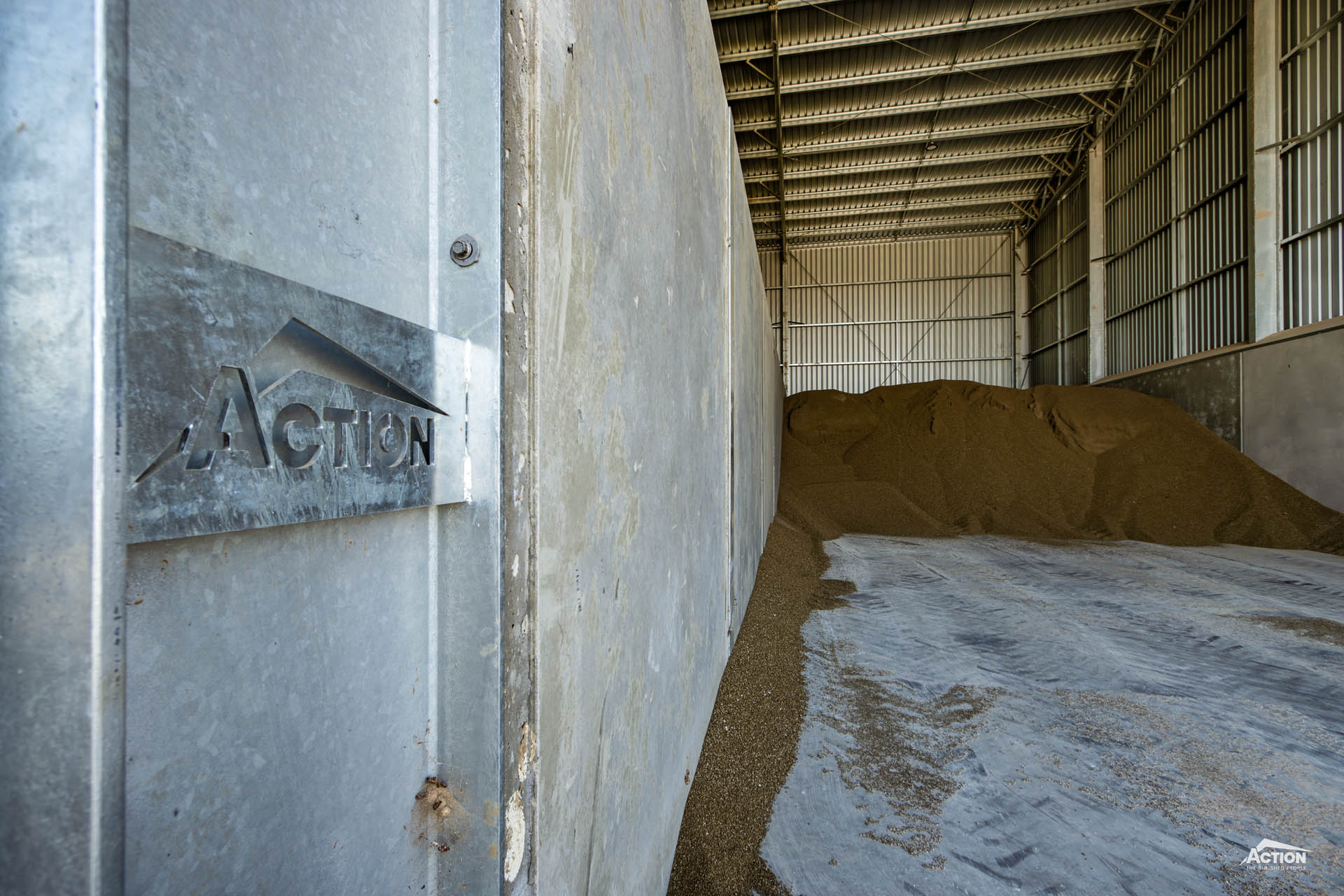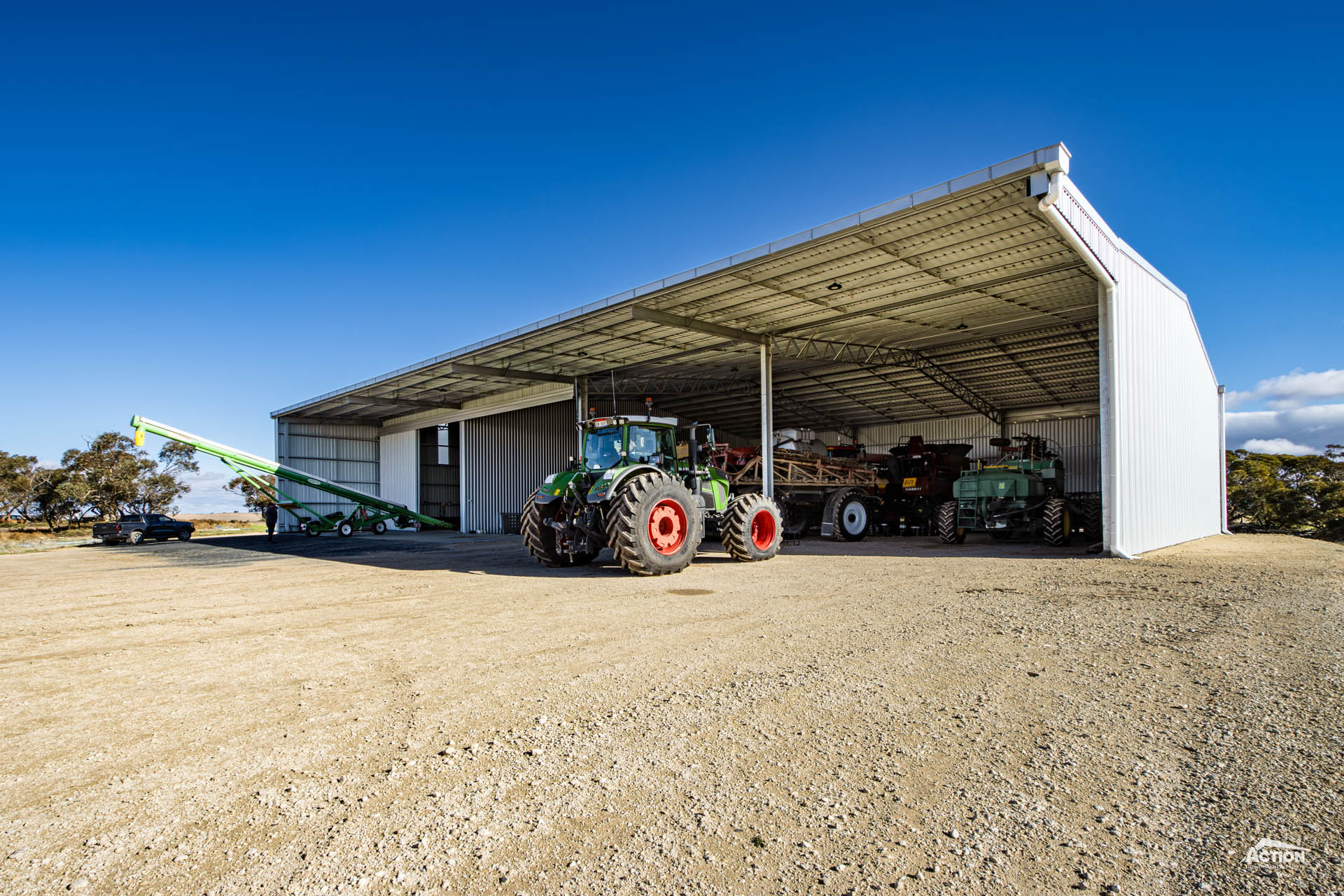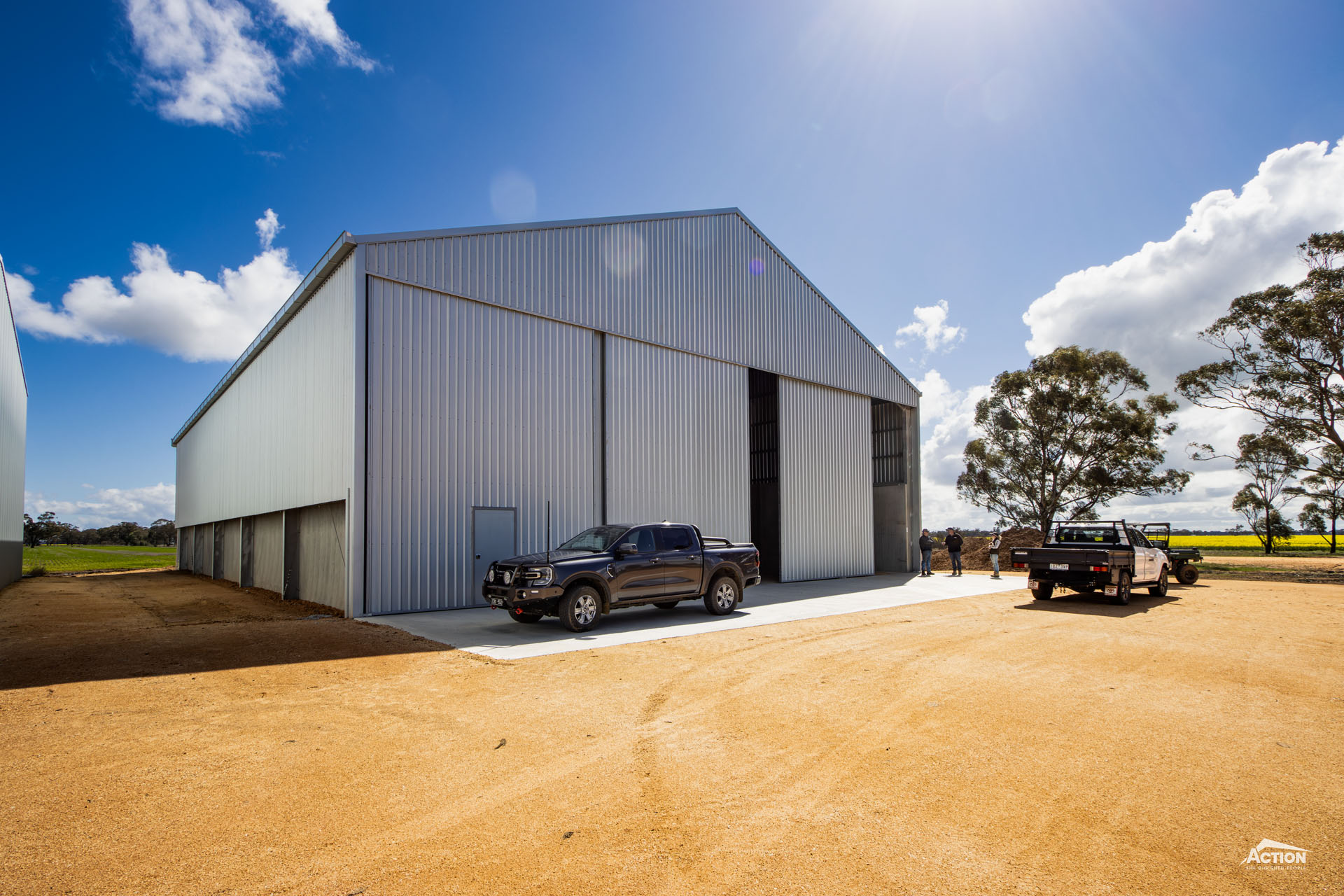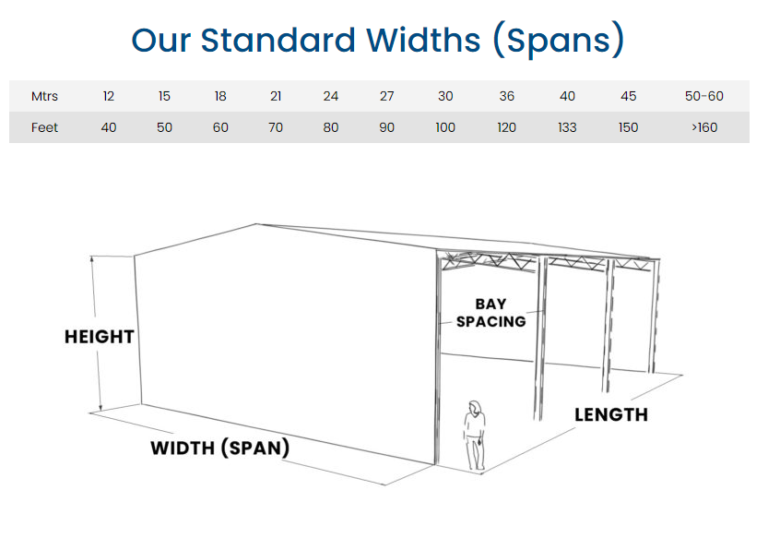We can’t overstate the importance of getting your farm shed heights right!
Not only is the height difficult to change once your shed is installed, but the height of your shed can influence the functionality and cost-effectiveness of your shed design.
Firstly, it is important to allow for machinery clearance – and machinery isn’t getting any smaller!
Secondly, for farm shed projects such as calving barns and feedlot sheds, height plays an important role in ensuring there is effective airflow.
Thirdly, increasing the height of your hay shed is a cost-effective way to increase the storage capacity, provided you have the correct machinery to load the shed.
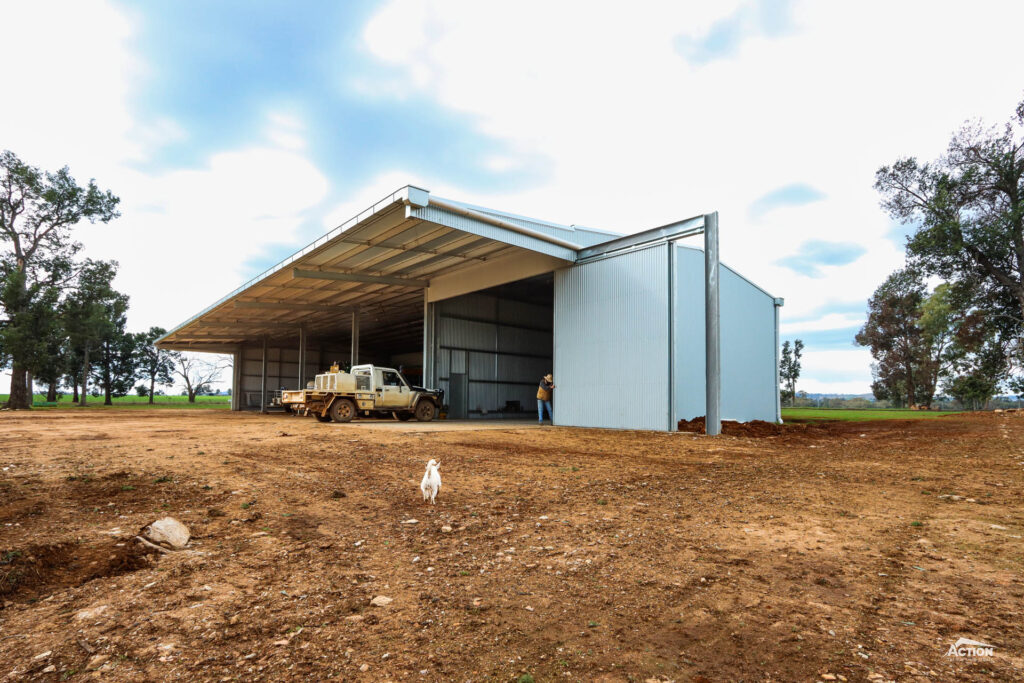
So, not allowing enough clearance height isn’t just frustrating – it can also be expensive in the long run.
In this this article we discuss everything you need to know about farm shed heights, including:
- Best-practice heights for different types of farm sheds
- Details that will impact clearance height such as sliding door beams and cantilevered canopies
- The importance of planning for the future
We hope this discussion is helpful!
What Is The Best Height For My Farm Shed?
The best height for your new farm shed will be determined by what the shed is being used for along with the your machinery clearance heights, any airflow requirements and design inclusions such as girder trusses.
If you are building alongside existing shed infrastructure this can also dictate the shed height.
Read on below for shed specific height advice.
Hay Shed Heights
It is worthwhile spending the time to work out which height will be best for your hay shed.
This is because increasing the height (provided it is safe) is a more cost-effective way to fit a few more bales than adding an extra bay on.
Primarily, the height of your hay shed should be governed by the reach of the equipment that you use to load and unload your shed.
For example, loading with a front-end loader means you are limited to stacking the big square bales up to six in height (or four round bales). This would require a shed height of 6 metres (or 5.25 metres for round bales).
With a telehandler though, big square bales can be stacked more than eight bales in height. However, it is obviously of utmost importance to put safety first when stacking bales this high.
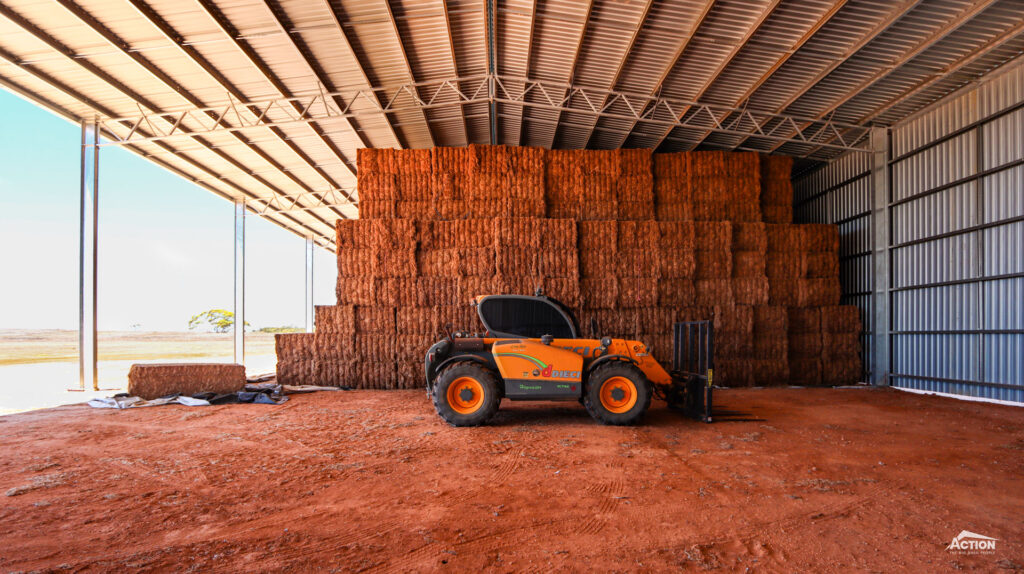
Common eave heights when storing big square bales, are 6.75 metres (seven bales high) and 7.5 metres (eight bales high).
Another popular hay shed height in recent years is 8 metres. This is to provide extra room when loading and unloading the top bales and for improved air movement around the bales.
Larger operators and export hay storage companies usually build their hay sheds 9 metres high as they have the machinery available to safely stack this high.
Finally, if your hay shed design includes a canopy or if you would like to add a canopy in the future, it is a good idea to increase the height. This could be an additional 250mm – 500mm depending on your clearance requirements.
For example, John Bennet’s multi-use hay shed, which you can learn about here – Versatile Hay Shed With Concrete Panels – has an 8.25m height to accommodate the future addition of a canopy.
You can also learn about John’s Action experience in the video below.
Machinery Shed Heights
When choosing the height for your machinery shed, factor in:
- the height of your current machinery
- the height of any potential future machinery purchases
- any doors or girder trusses being installed in the shed.
If you intend to repurpose your machinery shed for hay storage in the future, it is a good idea to make sure the shed height also works well for hay storage.
For most cropping operations a minimum of 6 metres is required so that there is enough clearance for machinery such as air seeders.
However, if you intend to install roller doors or sliding doors on your shed, you will have to allow an additional 500mm to your required clearance height to allow for the sliding door beam (or roller door drum).
Similarly, a girder truss or girder beam will also reduce the clearance height of a bay opening.
So, we usually don’t recommend a height lower than 6 metres high for a machinery shed.
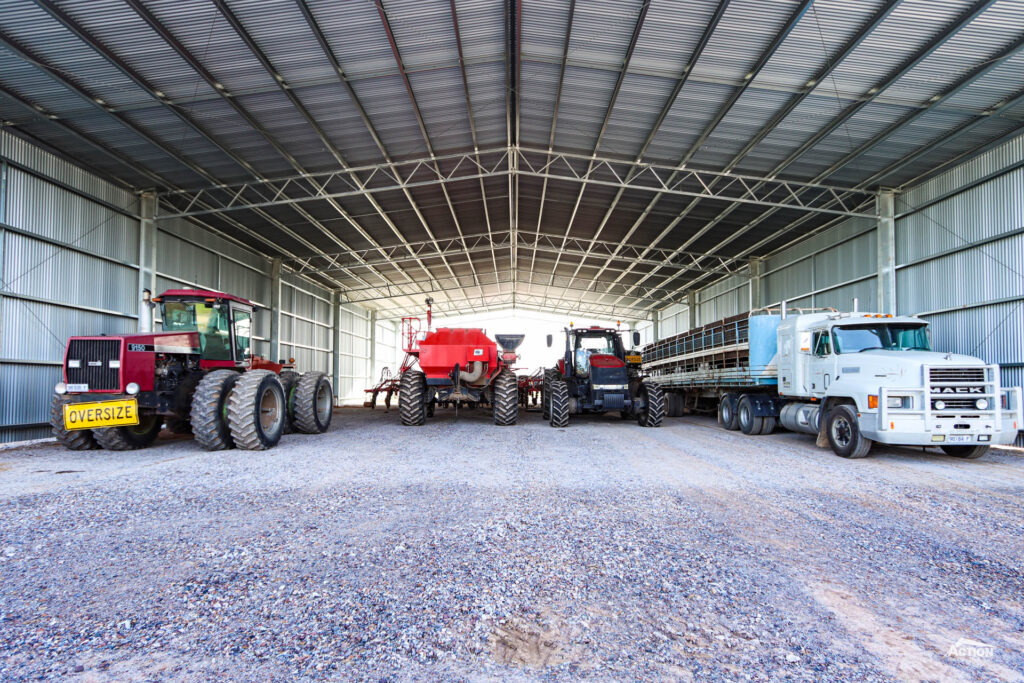

Yard Cover Heights
For sheep yard covers, heights between 3 metres and 3.5 metres typically work well.
It is important to allow sufficient height for a tractor to clean out the yards, but at the same time not allow too much weather to come into the yards.
Also, keep in mind that the depth of the trusses will impact on the clearance height throughout the cover. A workaround for this is to increase the height of your sheep yard cover and install gable infills or partial walls for protection from the prevailing weather.
We have recently released the 2024-2025 Sheep Yard Cover which provides advice on gable infills and more. You can download this here.
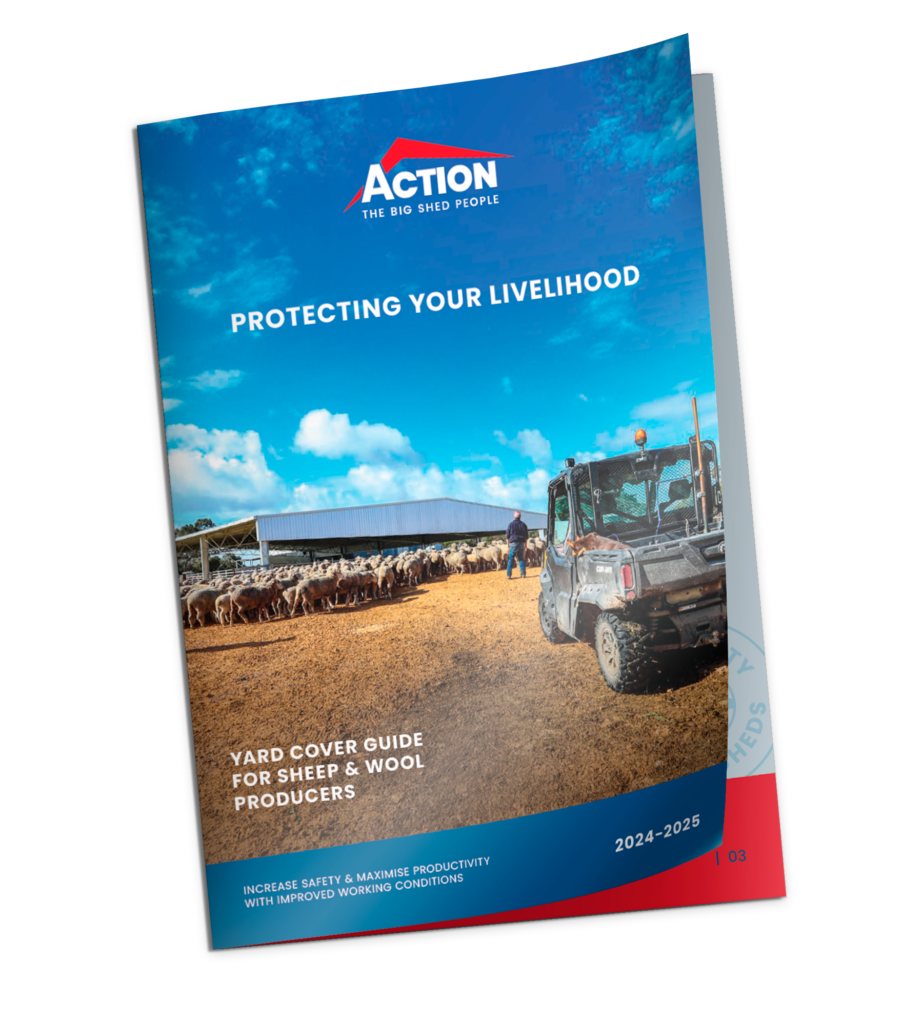
For cattle yard covers, the most common eave height is between four metres and five metres. This usually provides enough clearance for a tractor to clean out the yards, and lift cattle out of the crush if required.
Shearing Shed Heights
The most common height for shearing sheds is 4.2 metres.
The reason for this is that most raised boards sit at 1.2 metres above the concrete wool room floor. A height of 4.2 metres allows for a minimum clearance height of 3 metres from the top of the shearing board, to the underside of the roof. This makes for comfortable shearing conditions for shearers and ensures sufficient sliding door clearance heights on to the board.
Grain Shed Heights
Popular grain shed heights include 6 metres, 6.75 metres, 7 metres and 7.5 metres.
The height is usually determined by the type of grain you are storing, and the volume of grain being stored.
Height needs to be considered along with concrete panel wall height and the roof pitch to ensure the design accommodates the angle of repose.

What is angle of repose?
The angle of repose is “the steepest angle at which a sloping surface formed of loose material is stable.” The angle of repose is different for different grain types – for example, the angle of repose for barley is around 28° and the angle of repose for wheat is around 25° – and the actual angle will vary due to factors like the moisture content and quality of the grain.
It is also important to take into consideration machinery clearance requirements and how you will be loading the shed. For example, will you be tipping inside the shed?
Three metres is the recommended height for concrete panels as this allows for the angle of repose of most common grains.
Fertiliser Shed Heights
Like grain sheds, fertiliser shed heights need to be considered along with concrete wall height and roof pitch.
The type of product being stored, the volume of product being stored and how the shed will be loaded and unloaded will help determine what these need to be.
The Standard Fertiliser Shed Range includes a 6.75m high option with a standard pitch and an 8.25m high option with a steep pitch.
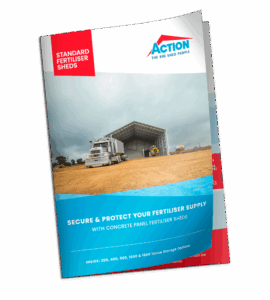
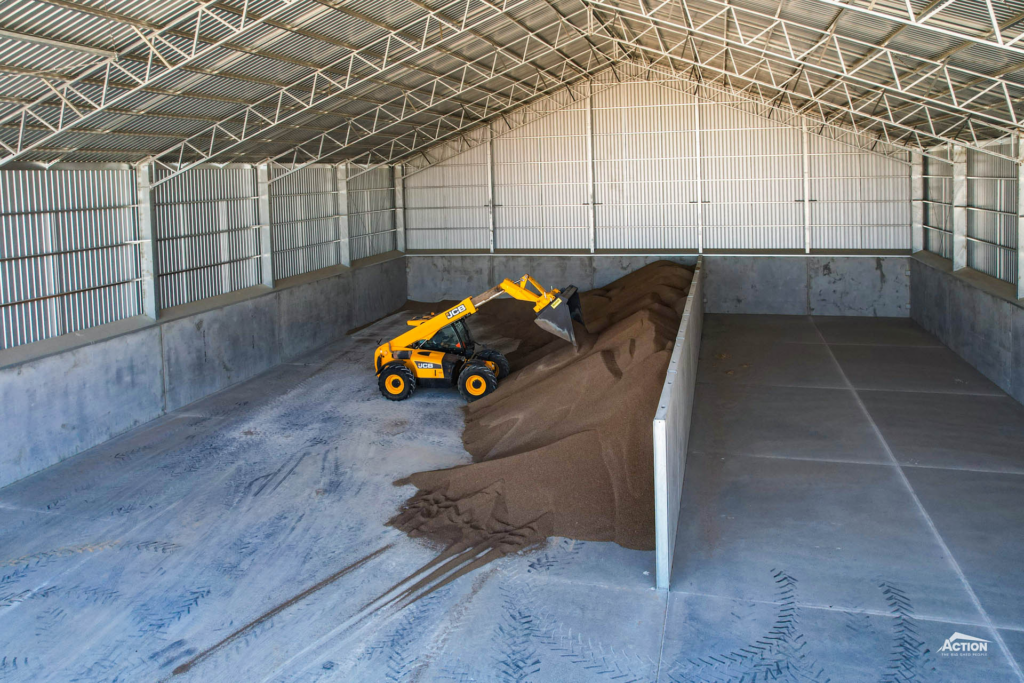
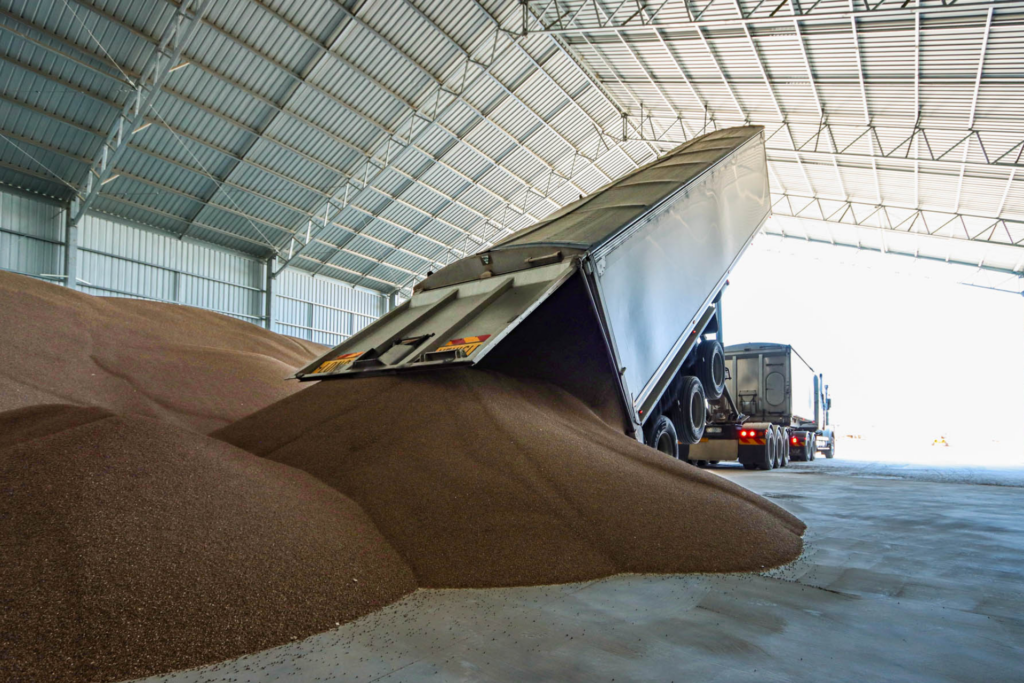
Chemical Shed Heights
When it comes to chemical sheds, a height of 6 metres is by far the most popular.
This works well for machinery clearance, and you can take advantage of the height with pallet racking.
If you are considering including a canopy on your chemical shed, it is a good idea to increase the height of your shed such as 6.25m, 6.5m or 6.75m.
Our building consultants have developed a range of best-practice chemical shed sizes and designs. This takes into consideration customer feedback and safety and sustainability requirements.
If you aren’t sure what size chemical shed you require, this is a good starting point.
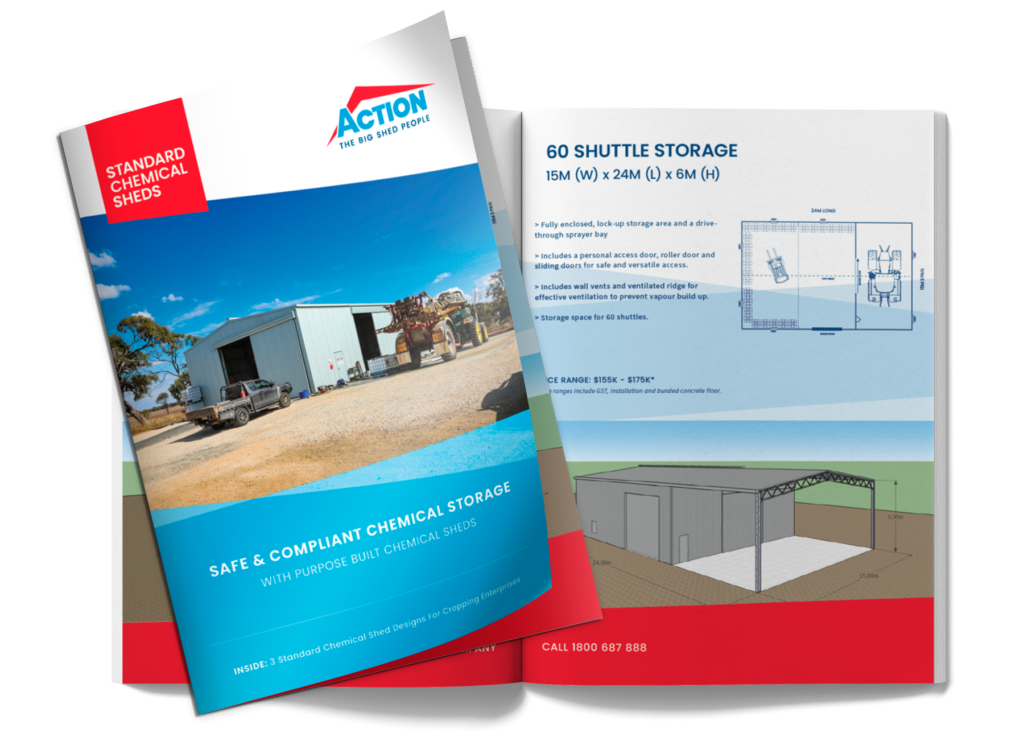
Calving Barn Heights
As we mentioned earlier, height is an important consideration for farm sheds like calving barns, covered feed pads and loafing barns.
Along with details like roof pitch, orientation and ridge ventilation, height can contribute to effective airflow, helping to keep cows cool, comfortable and performing.
Height will also impact the accessibility of the barn
Popular height options for barns include 5 metres, 5.5 metres and 6 metres. The best option will depend on the local climate and how exposed the site is to the prevailing weather.
You might find this article helpful – How To Use Barn Design To Maximise Cow Comfort
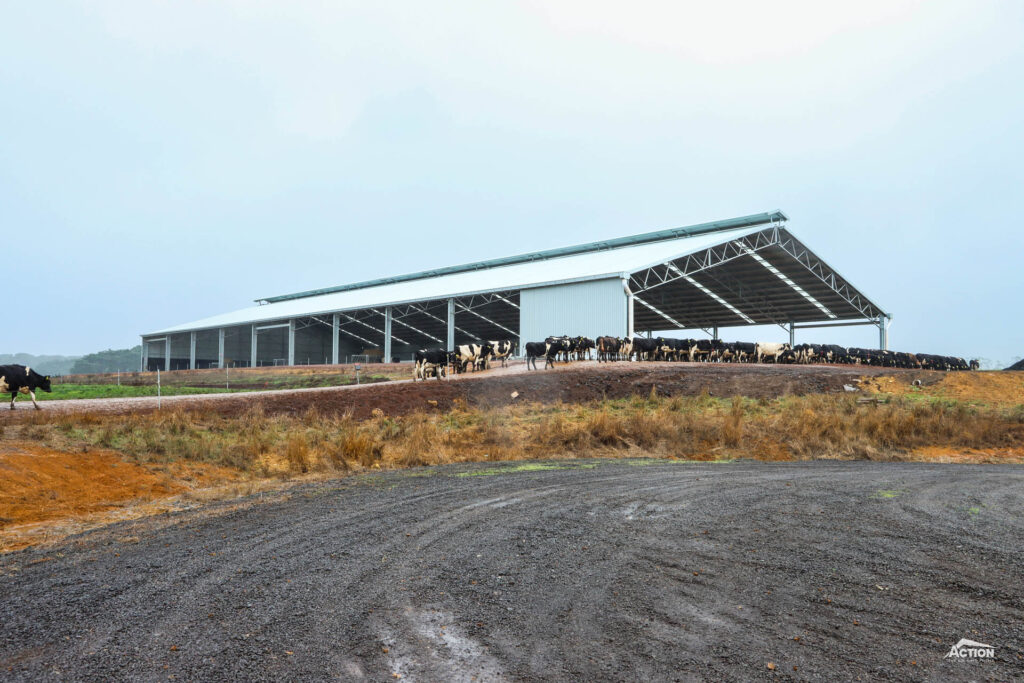
Feedlot Shed Heights
Like barn projects, choosing the correct height for your feedlot cover is important for both machinery access and airflow.
The ideal height for a feedlot cover is usually determined by factors such as site orientation, site exposure and the machinery that will need to be able to access the cover.
One of the most common heights is 6 metres high. This height provides adequate clearance for most machinery and helps facilitate good airflow through the cover – again this works in conjunction with roof pitch, ridge vent and orientation.
Riding Arena Cover Heights
Horse arena heights typically range from 4.5 metres to 6 metres, depending on what the riding arena is used for.
For example, if you will be jumping under the cover a height of 6 metres is a good option.
Increasing the height of your arena cover is also good way to future proof your facility – it gives you more options of how you can use it in the future.
What Else Do You Need To Know About Farm Shed Heights?
Firstly, let’s reiterate that height is a difficult detail to change once the shed has been installed.
So, it is important to get the detail right now -and for the future too.
Planning for the future by increasing the height of the shed is a cost-effective way to get the most out of your shed and helps avoid a frustrating lack of clearance
It could be simple as increasing your open-front machinery shed height from 6 metres to 7.5 metres, so that the shed can also be used for hay storage.
Finally, we have mentioned throughout this article that there are a number of design features that impact the clearance height of your shed. These include cantilevered canopies, sliding doors beams or roller door drums and girder trusses.
So, keep this in mind if you are including these in your shed design. Our building consultants are also available to provide advice on this in the design stage
That’s a wrap on farm shed heights!
If you have any questions or if you would like project specific advice, speak with one of our building consultants on 1800 687 888 – they would be happy to help!
We have also rounded up some additional useful resources which you can access below.
Useful Resources
- 9 Hay Shed Kit Sizes & Prices
- What Size Loafing Barn Do I Need?
- 6 Ideas For Wide Farm Machinery Storage
- Storage Calculators
For more information and resources, browse the Learning Hub.
